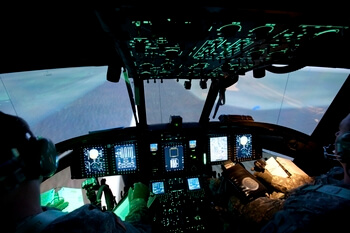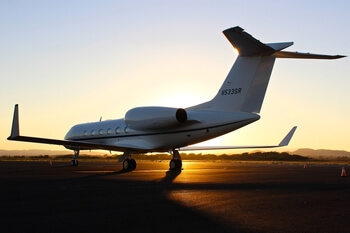The history of aviation is a tale of human ambition, innovation, and perseverance. From the first tentative steps of flight to the modern era of supersonic travel and space exploration, the journey through the skies has been nothing short of extraordinary. In this comprehensive guide, we will embark on a captivating journey through the history of aviation, exploring the key milestones, pioneers, and technological advancements that have shaped our ability to conquer the skies.
Ancient Dreams of Flight
The desire to fly has been a part of human imagination since ancient times. Mythological tales of gods and creatures with the power of flight filled the minds of early civilizations. Yet, it was the practical application of these dreams that took time to materialize.
Kites in Ancient China
The earliest recorded attempts at flight involved kites in ancient China, around 200 BCE. These simple devices laid the foundation for understanding the principles of lift and aerodynamics.
Leonardo da Vinci
In the 15th century, the brilliant polymath Leonardo da Vinci sketched detailed designs for various flying machines, including ornithopters and gliders. While these inventions were never built during his lifetime, they demonstrated his keen understanding of flight principles.
The Dawn of Modern Aviation
The dream of powered, controlled flight began to take shape in the late 19th and early 20th centuries. It was an era of innovation and experimentation as inventors and aviators around the world sought to defy gravity.
 Wright Brothers’ First Powered Flight
Wright Brothers’ First Powered Flight
On December 17, 1903, in Kitty Hawk, North Carolina, Wilbur and Orville Wright achieved the first controlled, powered flight in their aircraft, the Wright Flyer. This groundbreaking event marked the birth of modern aviation.
Glenn Curtiss and Developments
Glenn Curtiss, an early aviation pioneer, made significant contributions to aviation, including the development of seaplanes and flying boats. He also won the Scientific American Trophy for the first officially observed flight in America in 1908.
The Birth of Military Aviation
The onset of World War I in 1914 saw the rapid development of military aviation. Aircraft were initially used for reconnaissance but quickly evolved into formidable weapons of war.
Golden Age of Aviation
The period between the World Wars is often referred to as the “Golden Age of Aviation.” This era witnessed remarkable achievements and milestones:
Charles Lindbergh’s Transatlantic Flight
In 1927, Charles Lindbergh made history by completing the first solo, nonstop transatlantic flight from New York to Paris aboard the Spirit of St. Louis.
Amelia Earhart’s Pioneering Flights
Amelia Earhart, one of the most famous aviators of her time, became the first woman to fly solo across the Atlantic Ocean in 1932. Her accomplishments inspired generations of female aviators.
Development of Commercial Aviation
Passenger air travel took off in the 1930s with the introduction of commercial airliners like the Douglas DC-3. This marked the beginning of the modern airline industry.
World War II and Technological Advancements
World War II brought about rapid advancements in aviation technology and tactics. The conflict saw the emergence of iconic aircraft and laid the foundation for post-war aviation development:
Jet Propulsion
German engineers developed the world’s first operational jet engine during World War II, leading to the creation of jet-powered fighter aircraft like the Messerschmitt Me 262.
The Supermarine Spitfire
The British Supermarine Spitfire became a symbol of resistance during the Battle of Britain, showcasing the capabilities of advanced fighter aircraft.
The Jet Age and Supersonic Flight
The post-war period marked the beginning of the Jet Age, characterized by the widespread adoption of jet engines in commercial and military aviation. This era also saw the quest for supersonic flight:
The Bell X-1 and Chuck Yeager
On October 14, 1947, Chuck Yeager piloted the Bell X-1 to break the sound barrier, achieving a speed of Mach 1.06. This marked the start of supersonic flight.
Commercial Jet Travel
The introduction of the Boeing 707 in 1958 revolutionized commercial air travel, offering faster and more comfortable journeys for passengers.
Space Exploration and Beyond
The mid-20th century witnessed a dramatic expansion of aviation into space exploration:
The Space Race
The United States and the Soviet Union engaged in the Space Race during the Cold War, leading to the launch of the first artificial satellite, Sputnik 1, by the Soviet Union in 1957.
Moon Landing
On July 20, 1969, Apollo 11 astronauts Neil Armstrong and Buzz Aldrin became the first humans to walk on the moon. The lunar landing was a historic achievement in aviation and space exploration.
Modern Aviation and Beyond
The latter half of the 20th century and the early 21st century have been marked by significant advancements in aviation technology, including:
 Supersonic Commercial Aircraft
Supersonic Commercial Aircraft
The Concorde, a supersonic passenger aircraft, entered service in 1976 and dramatically reduced travel times for transatlantic flights.
Advances in Materials
The use of lightweight composites and advanced materials has made aircraft more fuel-efficient and environmentally friendly.
Automation
The development of advanced avionics and autopilot systems has improved safety and efficiency in aviation.
Space Exploration
The exploration of Mars, the development of reusable rockets, and private companies’ entry into space exploration have reshaped our understanding of aerospace possibilities.
Conclusion
The history of aviation is a testament to human ingenuity, determination, and a ceaseless pursuit of the skies. From the Wright brothers’ first powered flight to modern supersonic travel and space exploration, aviation has evolved in ways that have not only transformed the way we travel but also expanded our horizons beyond the Earth’s atmosphere. As we look to the future, aviation continues to push the boundaries of what is possible, promising even more remarkable achievements and discoveries in the years to come.

